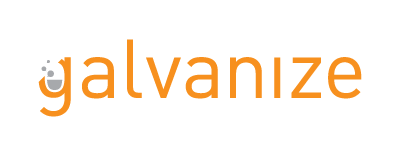Angular Controllers and $scope

Objectives
- Be able to explain what a controller is and how it is used in Angular apps
- Be able to explain what $scope is and how it is used in a controller.

You'll revisit these!
Objectives

- Be able to explain what a controller is and how it is used in Angular apps
- Be able to explain what $scope is and how it is used in a controller.
The Controller What:

Controllers are JS constructor functions that set up the $scope object and add behavior to the $scope
Controllers DO:
Controllers manage the business logic of your view
Controllers DO NOT:
- Set up the initial state of the $scope object
- Add behavior to the $scope object
- Manipulate the DOM
- Format inputs
- Filter outputs
- Share state across controllers
- Manage the lifecycle of other components
An example:

const app = angular.module("app", [])
app.controller("ShoppingController", function($scope) {
// This is your constructor function. Anything you
// do here should be bootstrapping the initial state
// of your app
// Anything added to the $scope object is available
// to the view
$scope.boundValue = "Initial Value for boundValue";
});
Discuss:

What is a controller?
Where would we use a controller?
Now, spend the next 3 minutes and answer these two questions:
A 2nd example:

<body ng-app="spicyApp">
<div ng-controller="SpicyController">
<input ng-model="customSpice">
<button ng-click="spicy('chili')">Chili</button>
<button ng-click="spicy(customSpice)">Custom spice</button>
<p>The food is {{spice}} spicy!</p>
</div>
</body>index.html
var myApp = angular.module('spicyApp', []);
myApp.controller('SpicyController', function($scope) {
$scope.customSpice = 'wasabi';
$scope.spice = 'very';
$scope.spicy = function(spice) {
$scope.spice = spice;
};
});app.js
Your turn! 8 minutes!
Build an angular app with a single HTML page and with a single app.js file that has one controller.
Use the controller and $scope to bind to a an input and display that input on the page
Stretch goal: explore ng-style in the angular docs, how can you implement it in this app?
Objectives
- Be able to explain what a controller is and how it is used in Angular apps
- Be able to explain what $scope is and how it is used in a controller.

The What:
$scope is used to expose our js functions and data to the view, our HTML
This means that $scope acts as the go-between for the model and the view
Scope is an object that refers to the application model. It is an execution context for expressions. Scopes are arranged in hierarchical structure which mimic the DOM structure of the application. Scopes can watch expressions and propagate events.
Also! It's just a JavaScript Object, you can attach methods and properties to it.

Take Note:
Scope Heirarchies:
- Each Angular application has exactly one $rootScope, but may have multiple child scopes.
- When new scopes are created, they are added as children on the parent scope.
- When angular evaluates {{this}} it looks on the current scope and then goes up the chain, looking at parents until it hits $rootScope
- This is a lot like prototypal inheritance!
an unexpected behavior:
A significant problem that developers new to Angular encounter is that attaching primitive values to $scope breaks the 2-way data binding a LOT.
If you do this, you will save yourself COUNTLESS HOURS trying to debug.
So always assign all $scope primitives to an object that is bound to $scope.
// Don't do this:
$scope.somePrimitive = 5;
// Instead, always always always do this:
$scope.view = {};
$scope.view.somePrimitive = 5;
Scope and Directives:

Custom and some built-in directives also create scope in angular, which you'll need to watch out for.
These directives create their own scope context! You'll also create custom directives that create their own scope.
Some built-in directives that create scope include:
- ng-controller
- ng-repeat
- ng-if
- ng-view
- ng-switch
- ng-include
Consider it:
Spend 4 minutes writing about scope and controllers, answer these questions:
- What is $scope?
- How are scopes created?
- What are controllers?
- How are controllers related to $scope?
Afternoon Exercises:
First: Read the intro to controllers markdown in the Angular curriculum and do the exercises.
Second: Work on the Ca$h Register assignment for Thursday
The intro to $scope article in the Angular curriculum is a good resource to learn more about $scope, if you are interested read that.
Controllers and $scope
By Lionel Lints
Controllers and $scope
- 890



